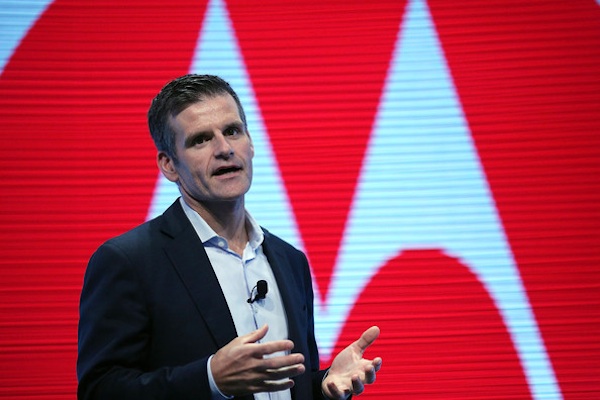Affiliate links on Android Authority may earn us a commission. Learn more.
Will Motorola's new low pricing strategy worry companies like Samsung?

[quote qtext=”The price of a smartphone is $650. That’s not gonna persist.” qperson=”Dennis Woodside, CEO of Motorola” qsource=”” qposition=”left”]
These comments are great news for consumers who could see the price of flagship smartphones fall if Motorola is successful in shaking up the market. But Rolfe Winkler of the Wall Street Journal also thinks that these fighting words from Woodside should have “executives at Samsung shaking in their boots.” He also thinks that “folks at Apple should also be sweating.” Is he right? Unfortunately no and here’s why.
Winkler is working on the assumption that Motorola, as a well known brand, will be able to sweep in and metaphorically pull the rug out from under Samsung’s (and Apple’s) feet by drastically reducing the cost of high-quality smartphones. Motorola will release its highly anticipated Moto X phone this fall and it is assumed that Woodside’s comments are about the pricing of the Moto X and other handsets that Motorola has in the pipeline.
Assuming the Moto X is in the same class as the Samsung Galaxy S4 and the HTCOne, Winkler is predicting that Samsung and HTCwill lose market share based purely on price. However he is wrong for several reasons.
First, although Samsung makes huge profits and has high margins on its phone sales (as does Apple) even if Samsung reduced its profit margins dramatically, the device would still sell for $500 or more. Although the component costs of the phone is under $250 that does’t include actually assembly costs, R&D and corporate overheads etc. If Woodside is only talking about a $150 reduction in the wholesale price, although welcome, that isn’t enough to revolutionize the market.
This means that the Moto X will be a high end phone, but not as high end as the S4 or the HTCOne. With lower component costs, lower R&D costs and lower margins the Moto X could have a wholesale price of under $300. And that leads to the second point. The LG Nexus 4. It costs just $299 and is a high end phone with a 4.7 inch 720p display, a Qualcomm Snapdragon S4 Pro processor, 2GB of RAM, GPS, NFC and Corning Gorilla Glass 2.
That means it is very possible to create a high quality, lower cost Android smartphone. But although the Nexus 4 has been very popular it hasn’t really dented Samsung’s dominant position. Winkler is suggesting that Google doesn’t care about its partners because it is going to use Motorola as a direct means to compete with those very same partners. If that were true, the very existence of the Google Nexus range should have sent Google’s partners into a sulk years ago. Although Google has always used its partners as manufacturers for these devices, each phone and tablet has a different manufacturer, so one could always complain or worry about an advantage that a direct competitor is receiving from Google. This simply didn’t happen.
Thirdly, Winkler points out that Chinese companies like Xiaomi are doing well with lower priced high end smartphones. It is thought that Xiaomi probably generated around $2 billion in sales in 2012. He attributes the success of the Chinese maker to its strategy of selling high-end smartphones for less than $300. And he is right, but it also serves as a reminder that the world isn’t just the USA. By the end of 2013, about half a billion Chinese users are expected to own smartphones, ninety percent of which will run Android. For Motorola to make in-roads into Samsung’s market share it needs to think about sales outside of the USA. Samsung is already ahead of the game in China where it posted record high sales with over 12 million units sold in the first quarter of this year.
What does this all mean?
The bottom line is that the Moto X will be a high end phone with a very aggressive price point. It will have betters specs than the current Nexus 4 and will sell at the same or a lower price. If it isn’t better and cheaper than Motorola will go the way of the dinosaur. Traditionally Motorola has been strong in the USA and it has good working relationships with the carriers. That means that US buyers will likely see some good contract related deals for the Moto X. As for the rest of the world, a more aggressive pricing strategy from a big brand could signal a shift in the price/performance ratio of Android smartphones, but that really depends on how aggressive Motorola intends to be.